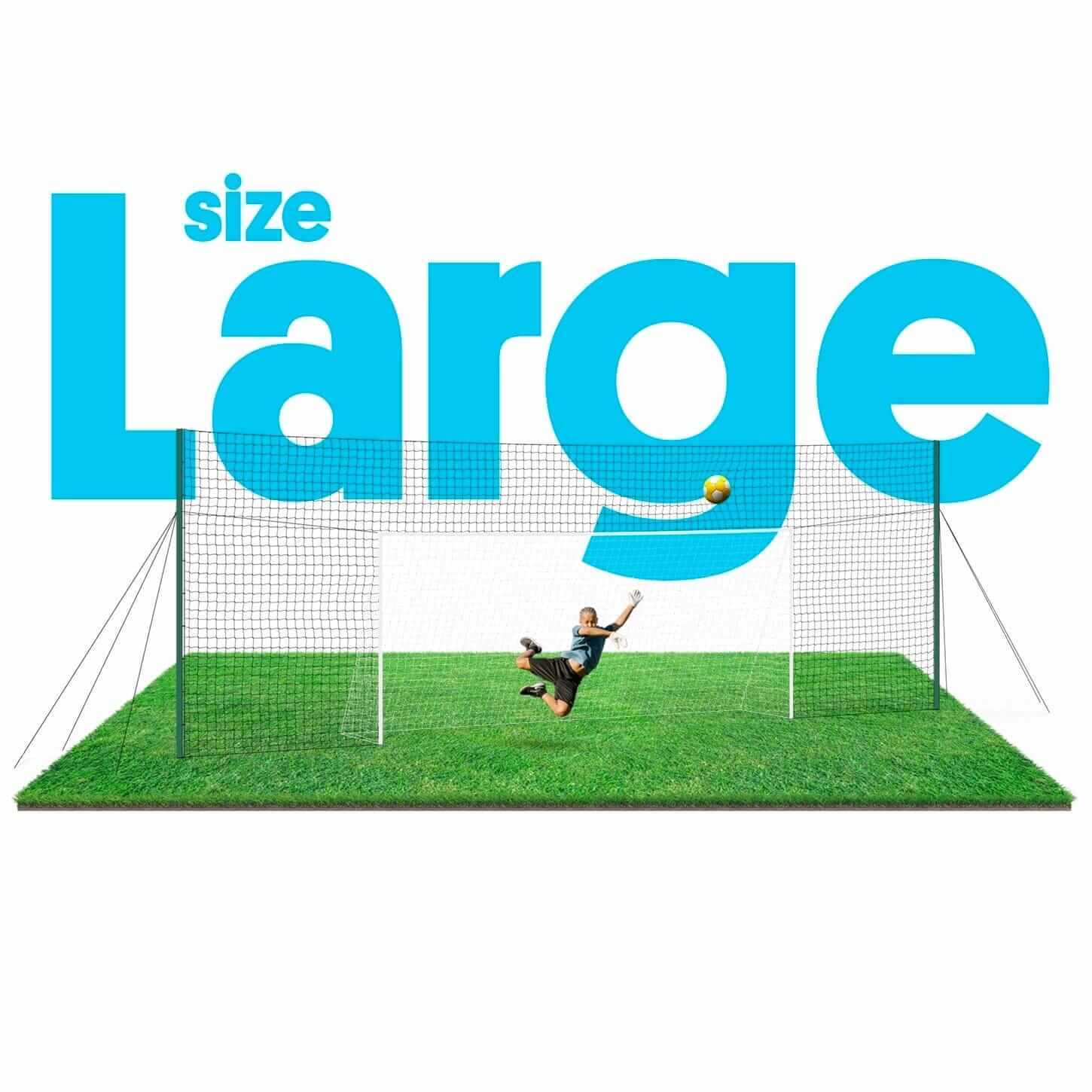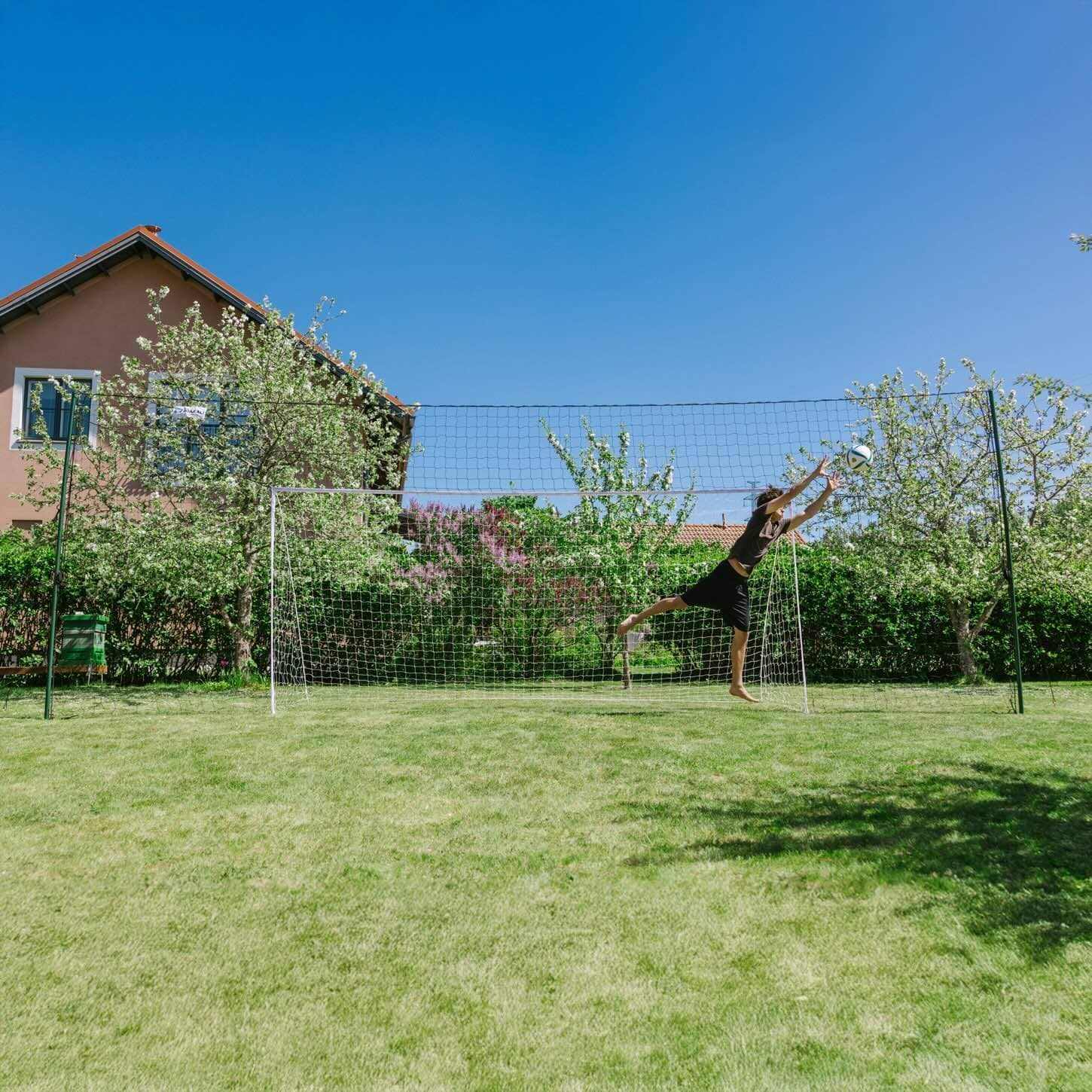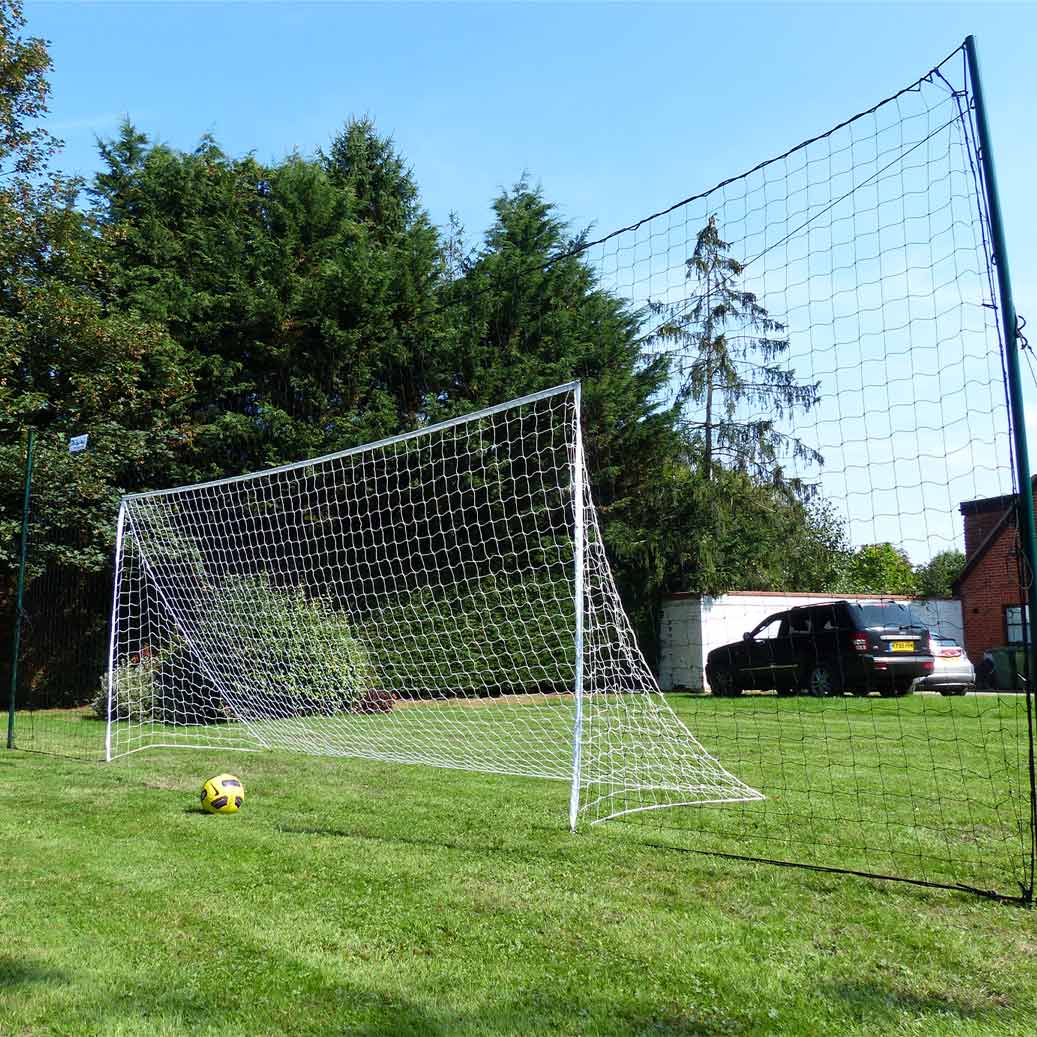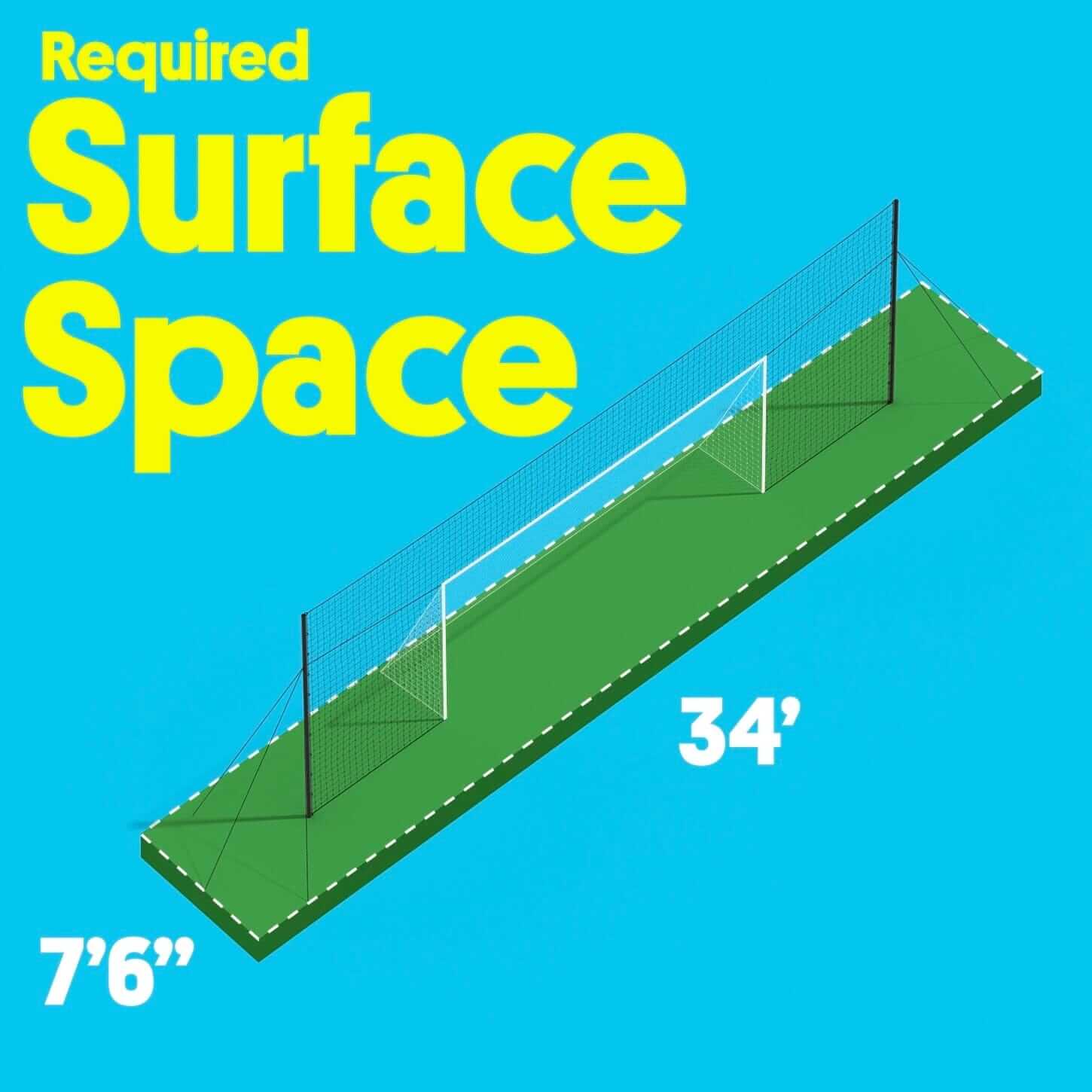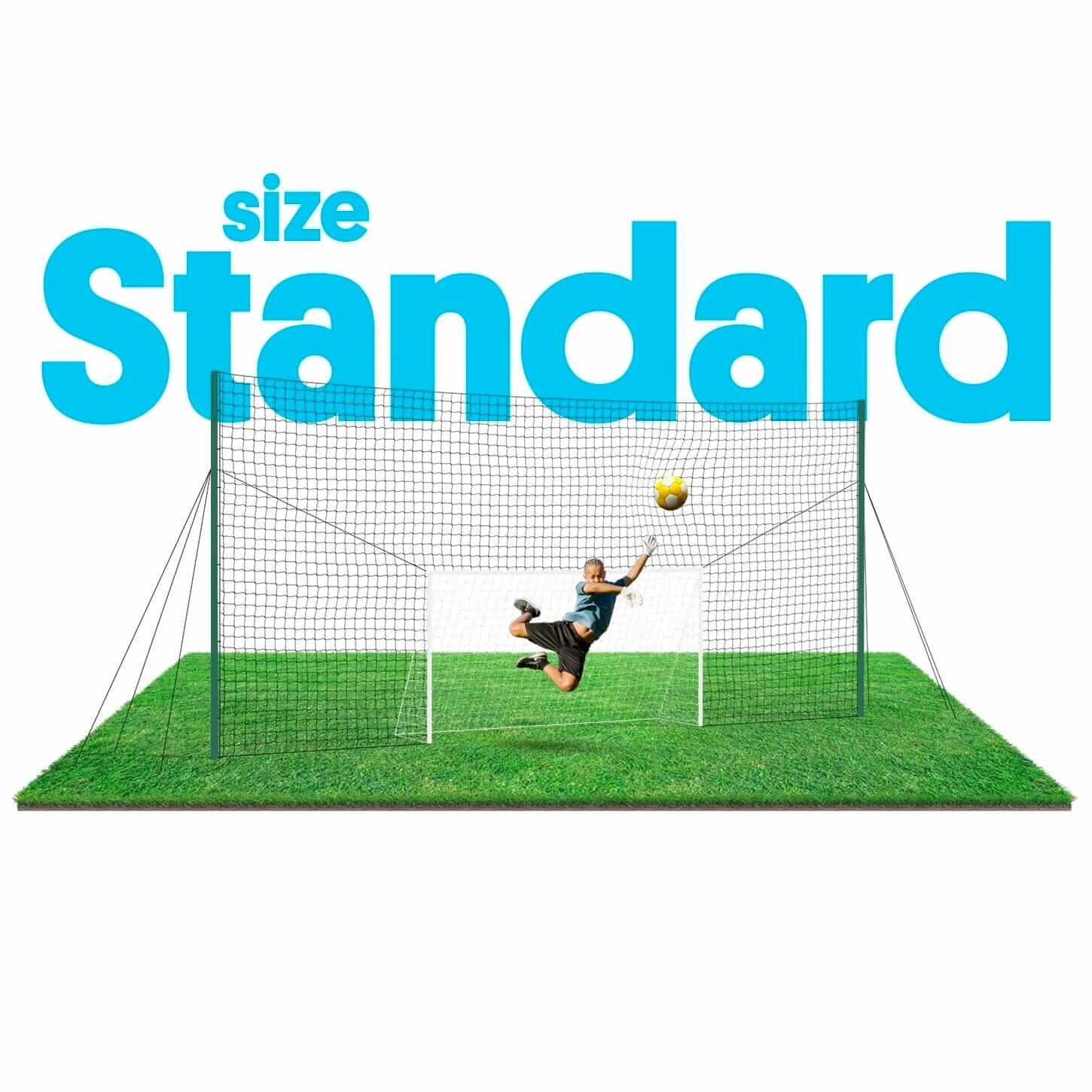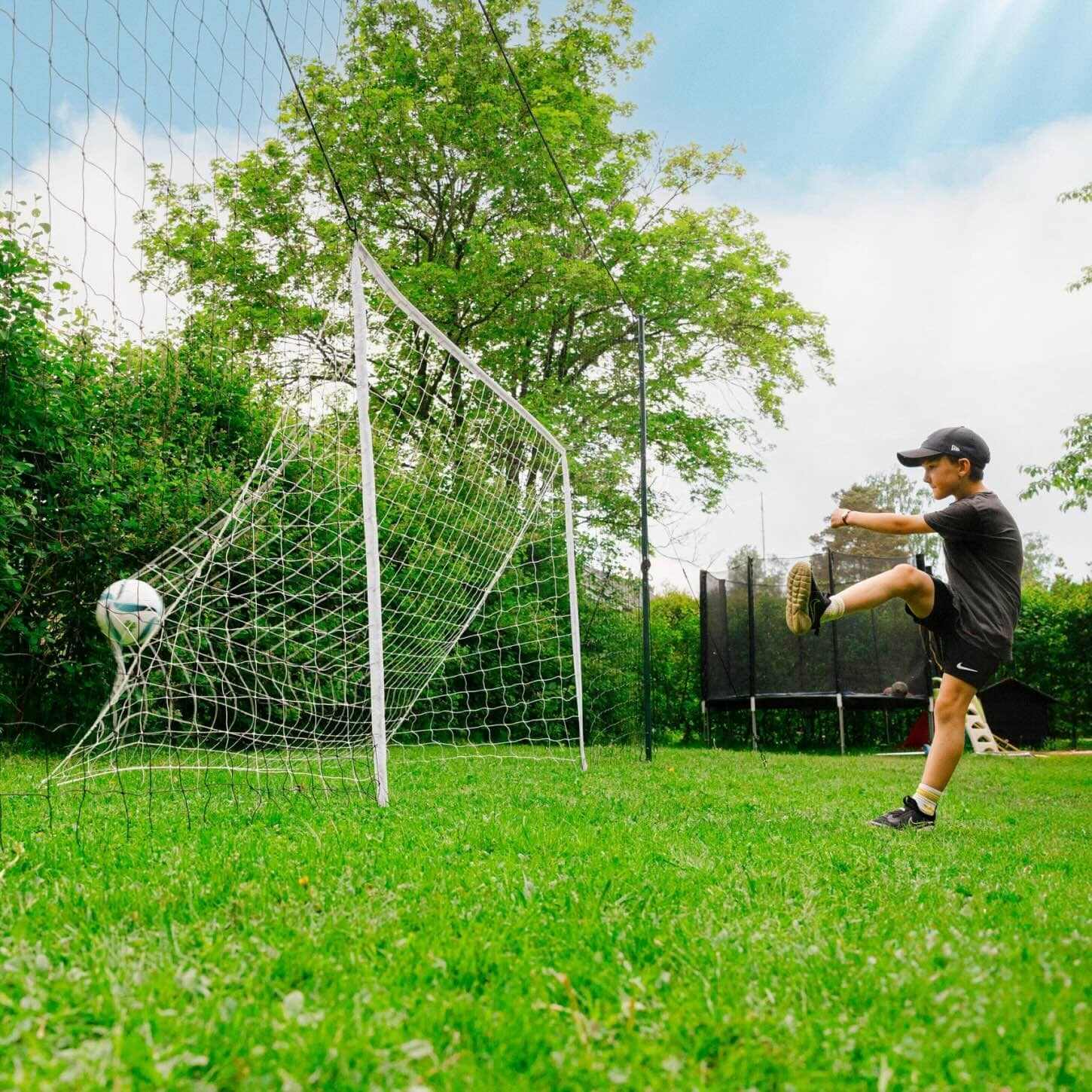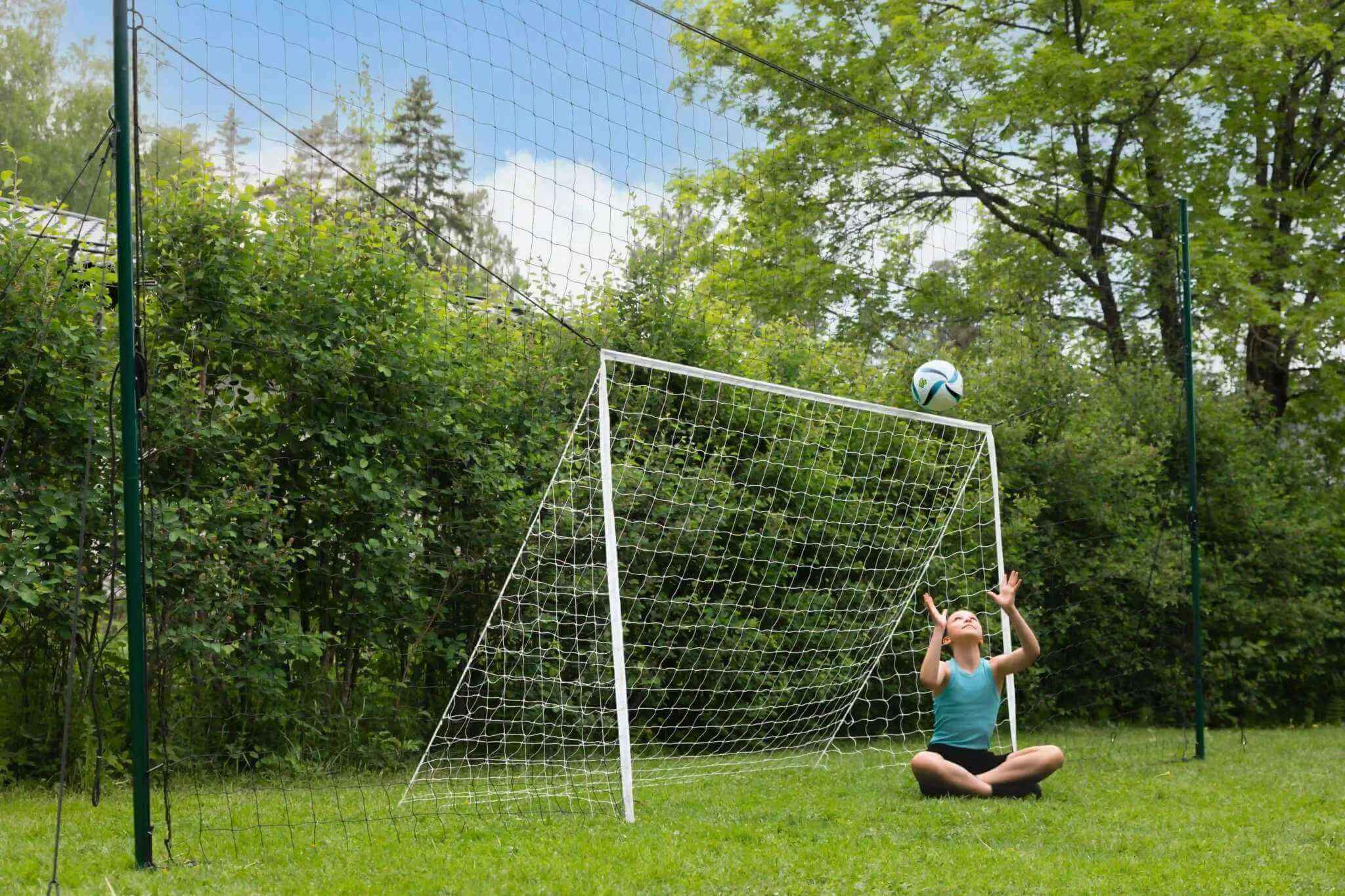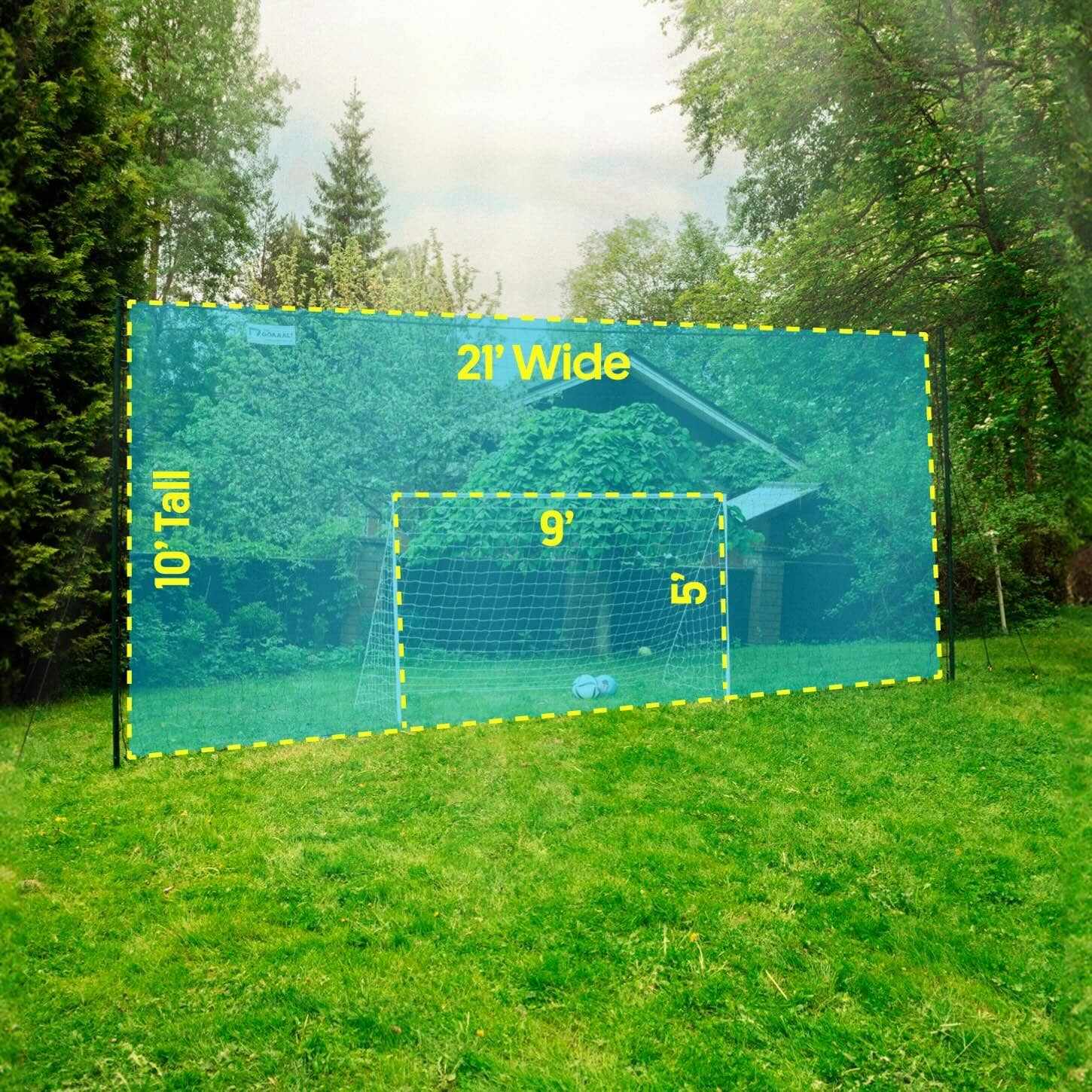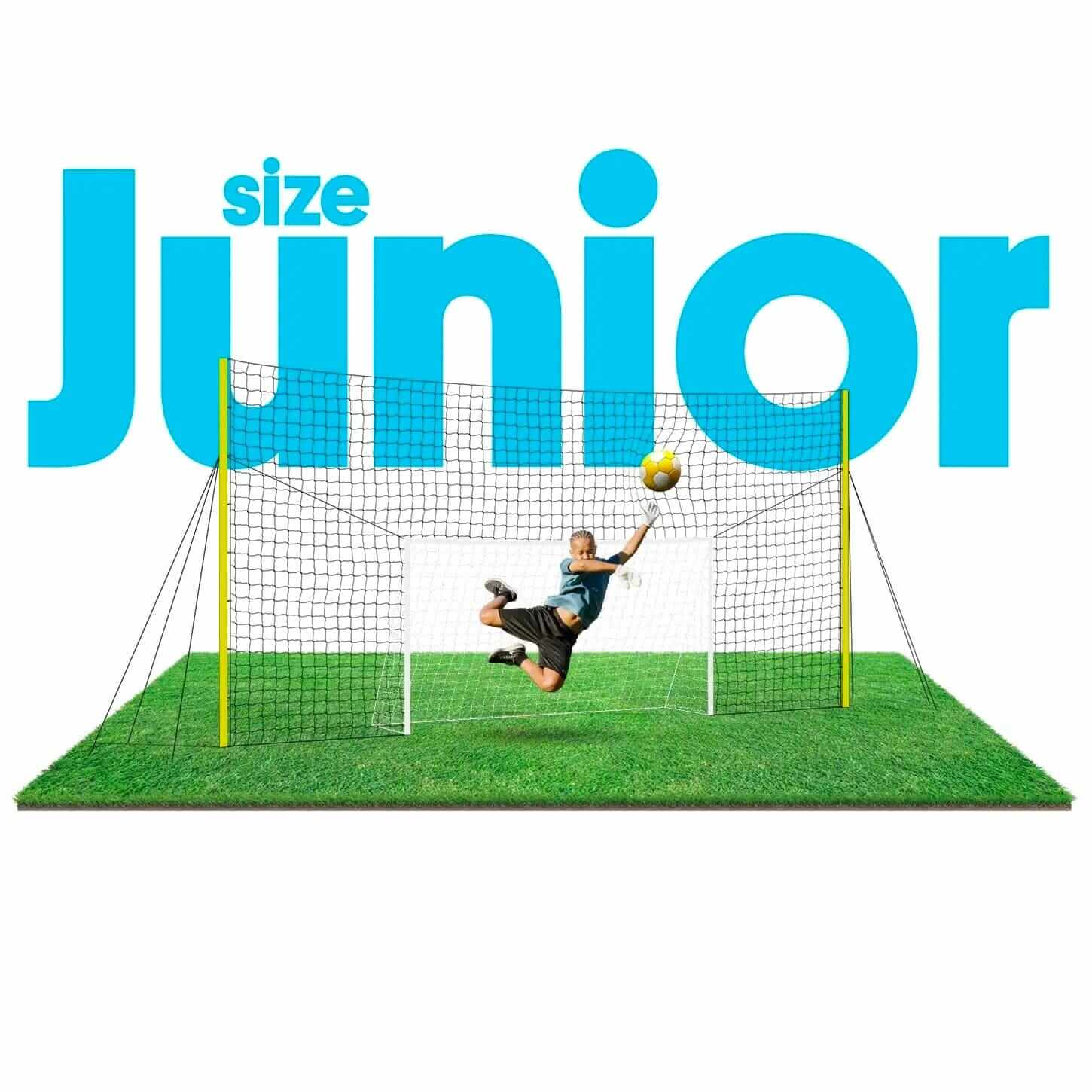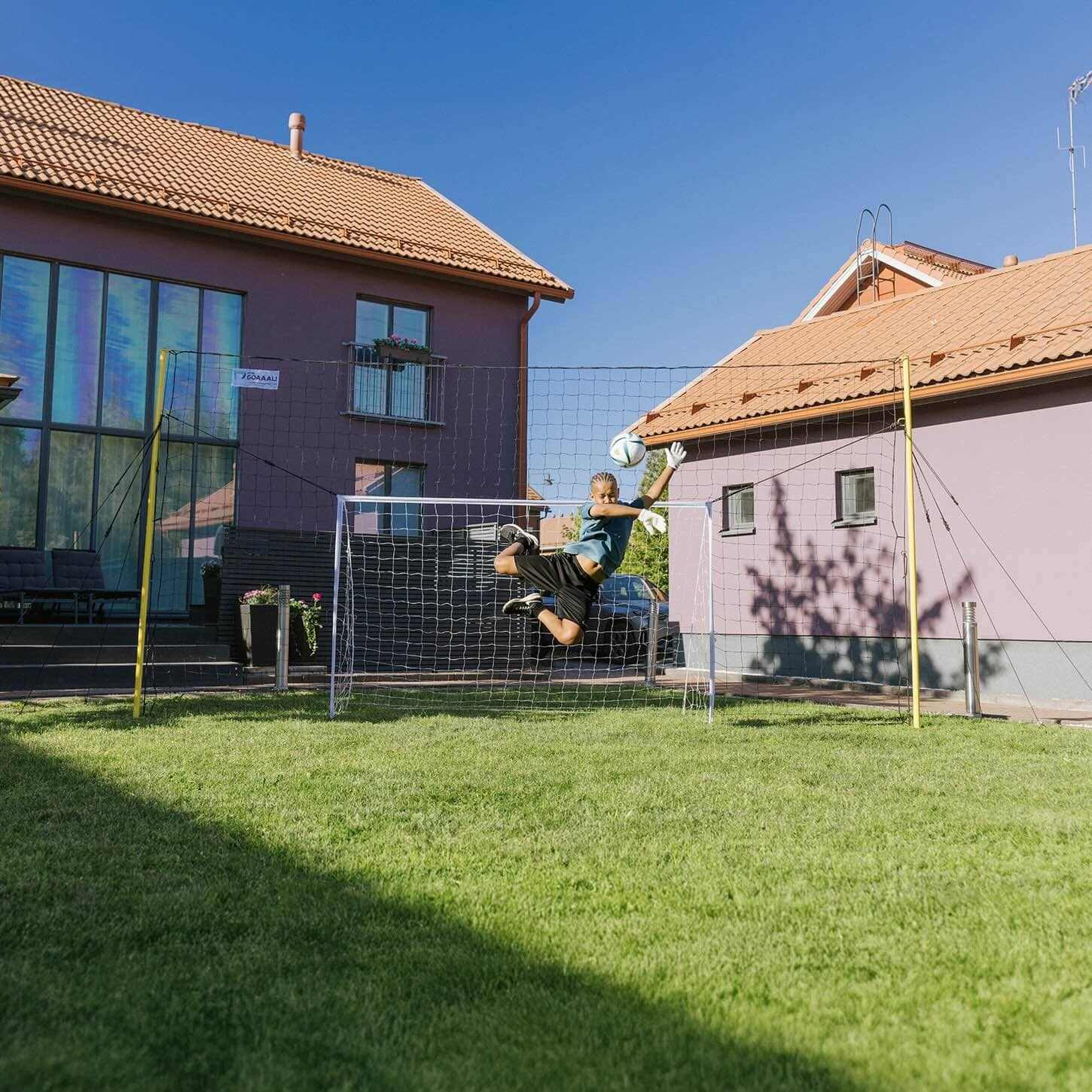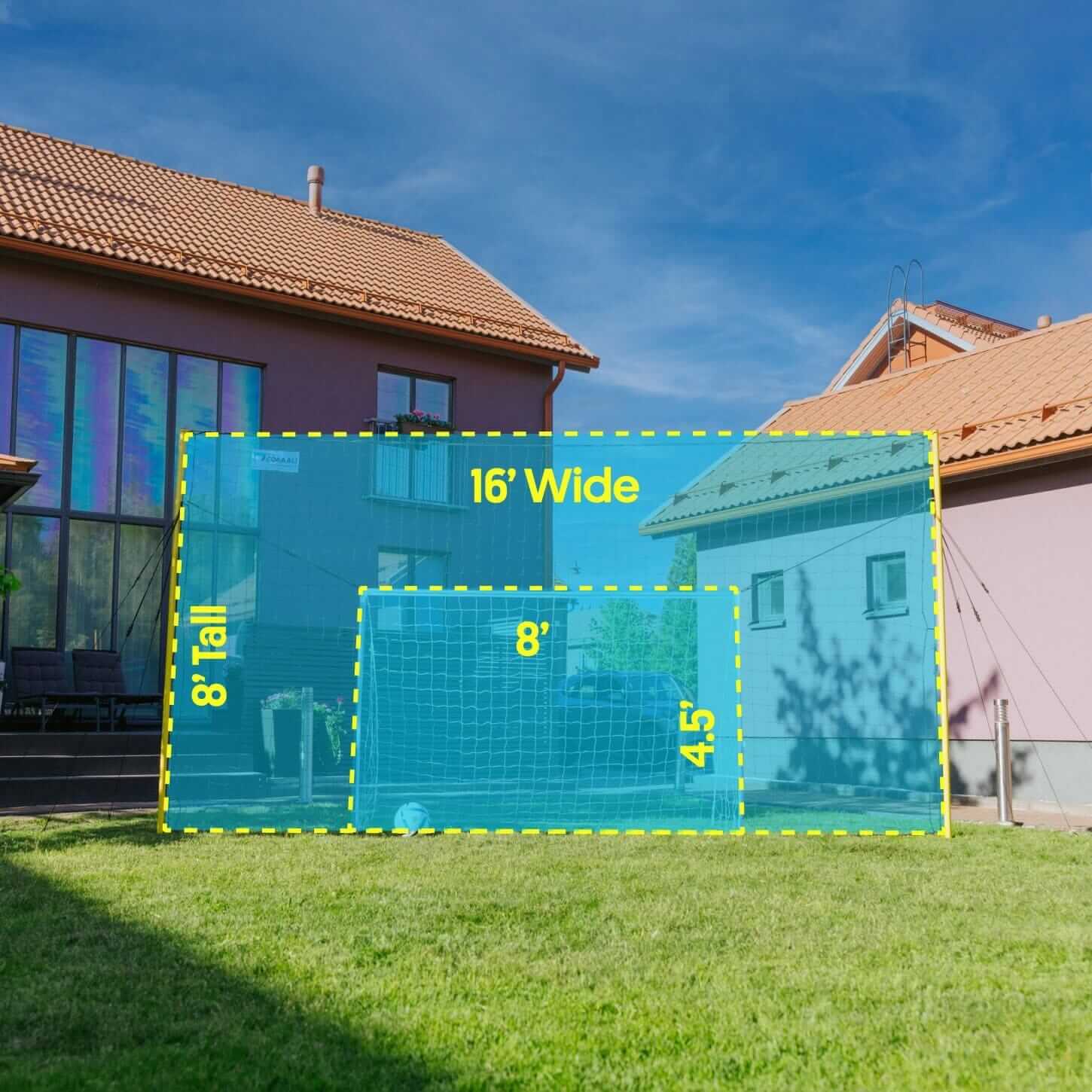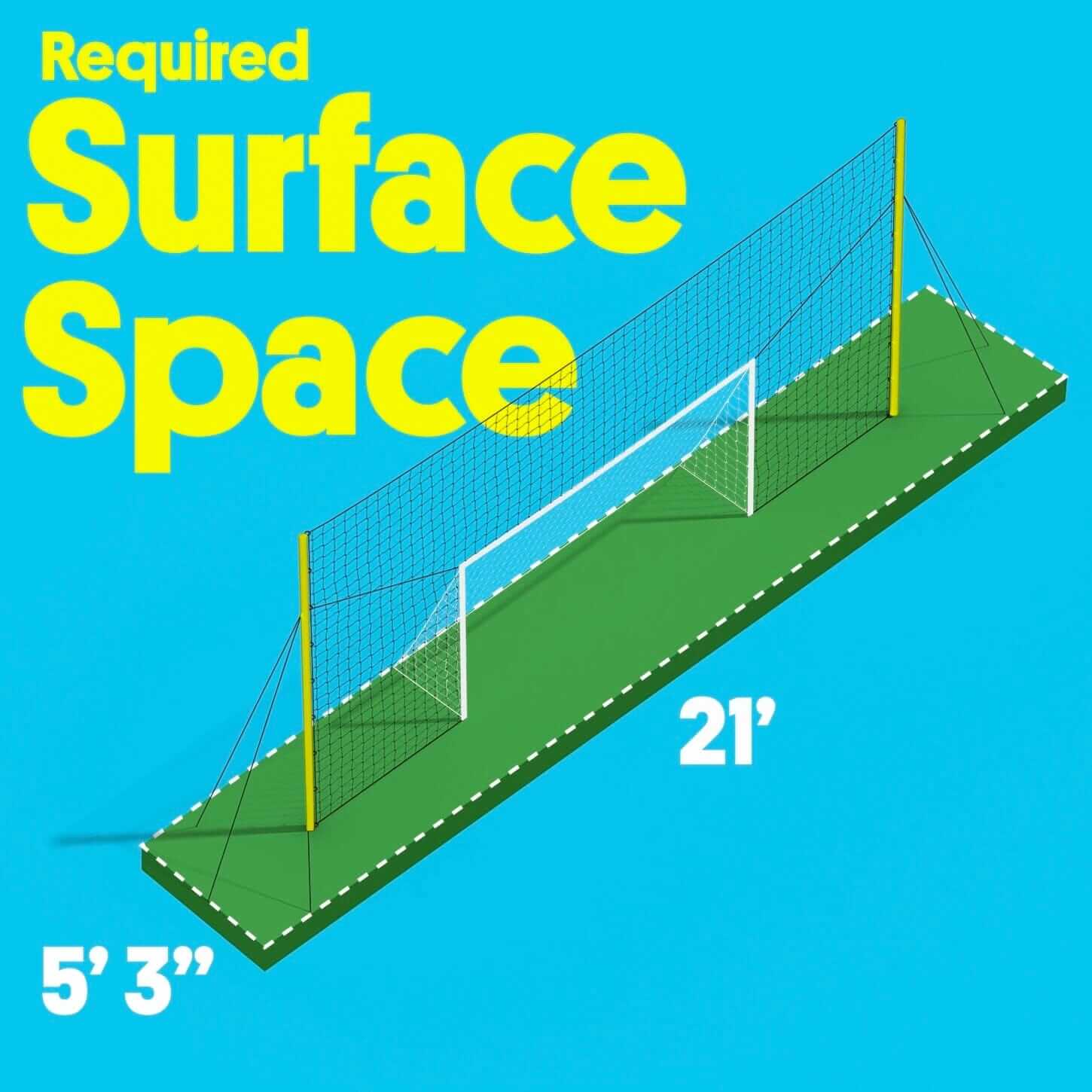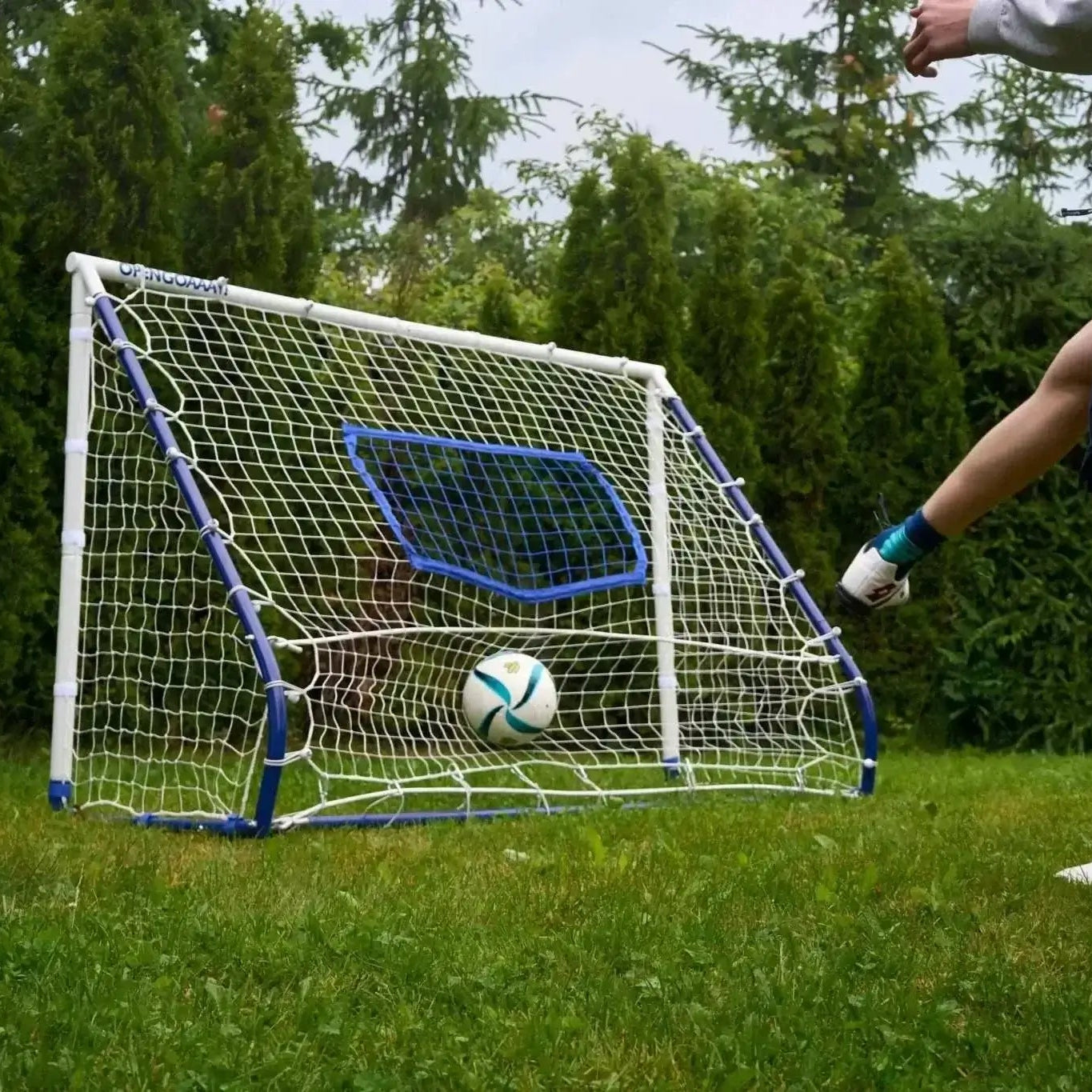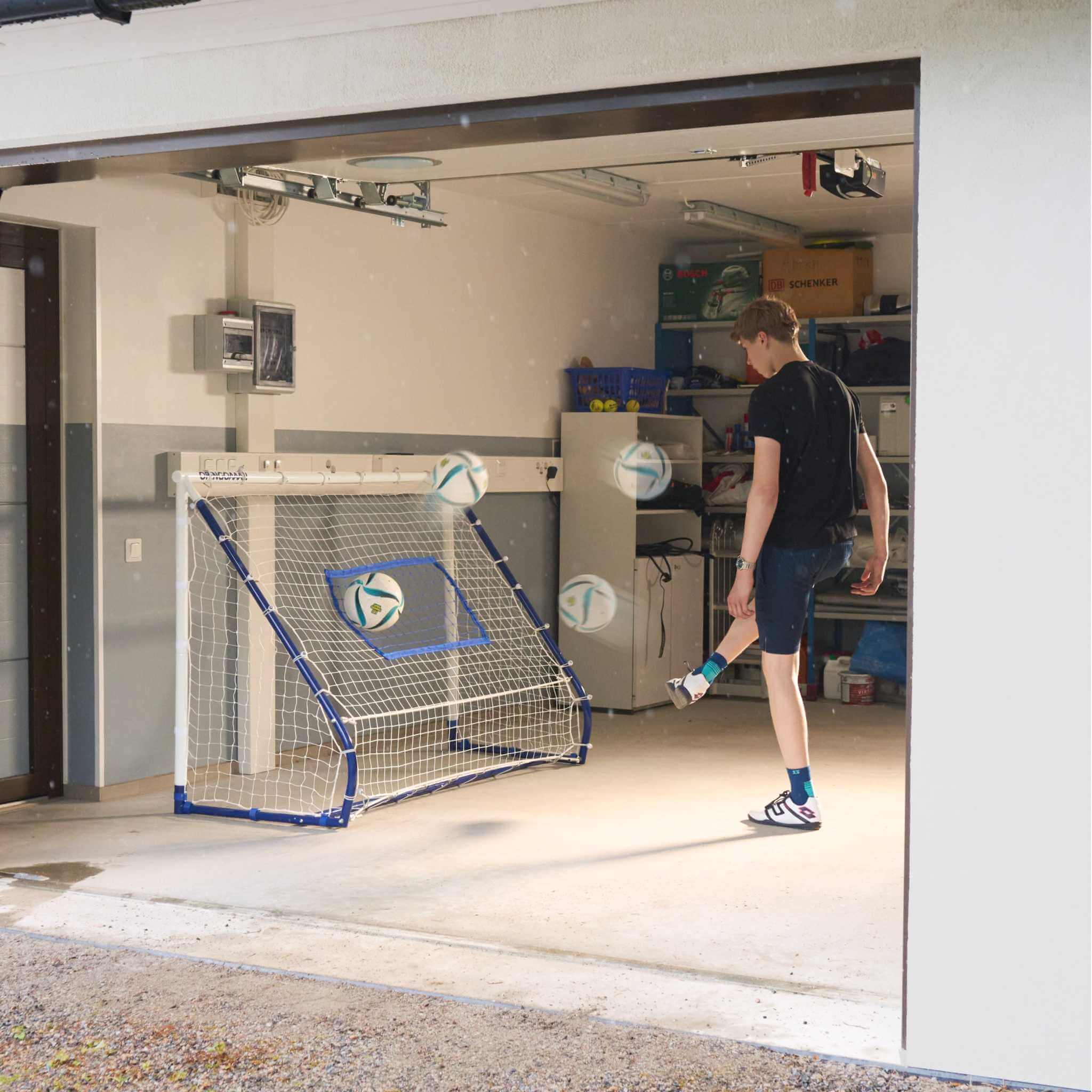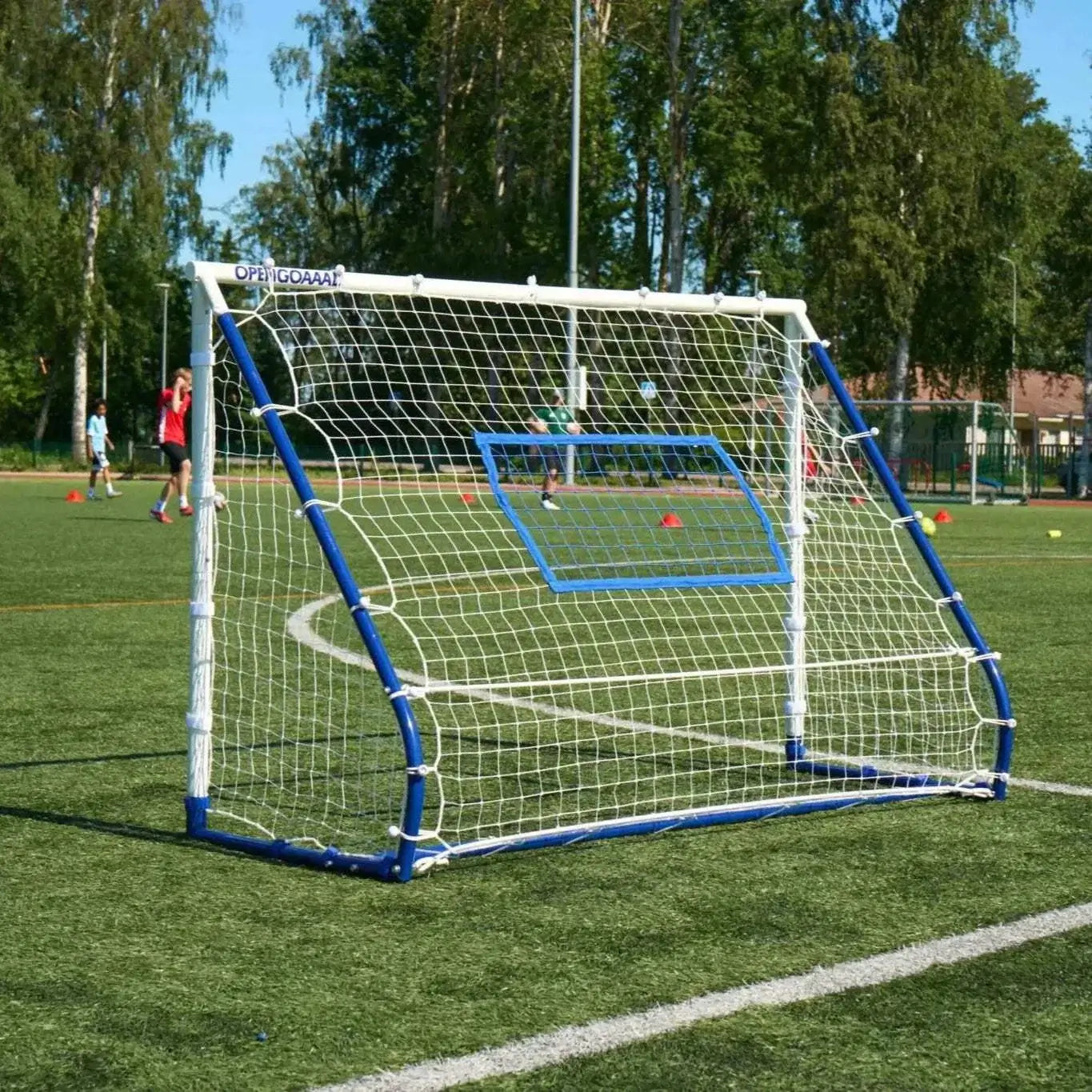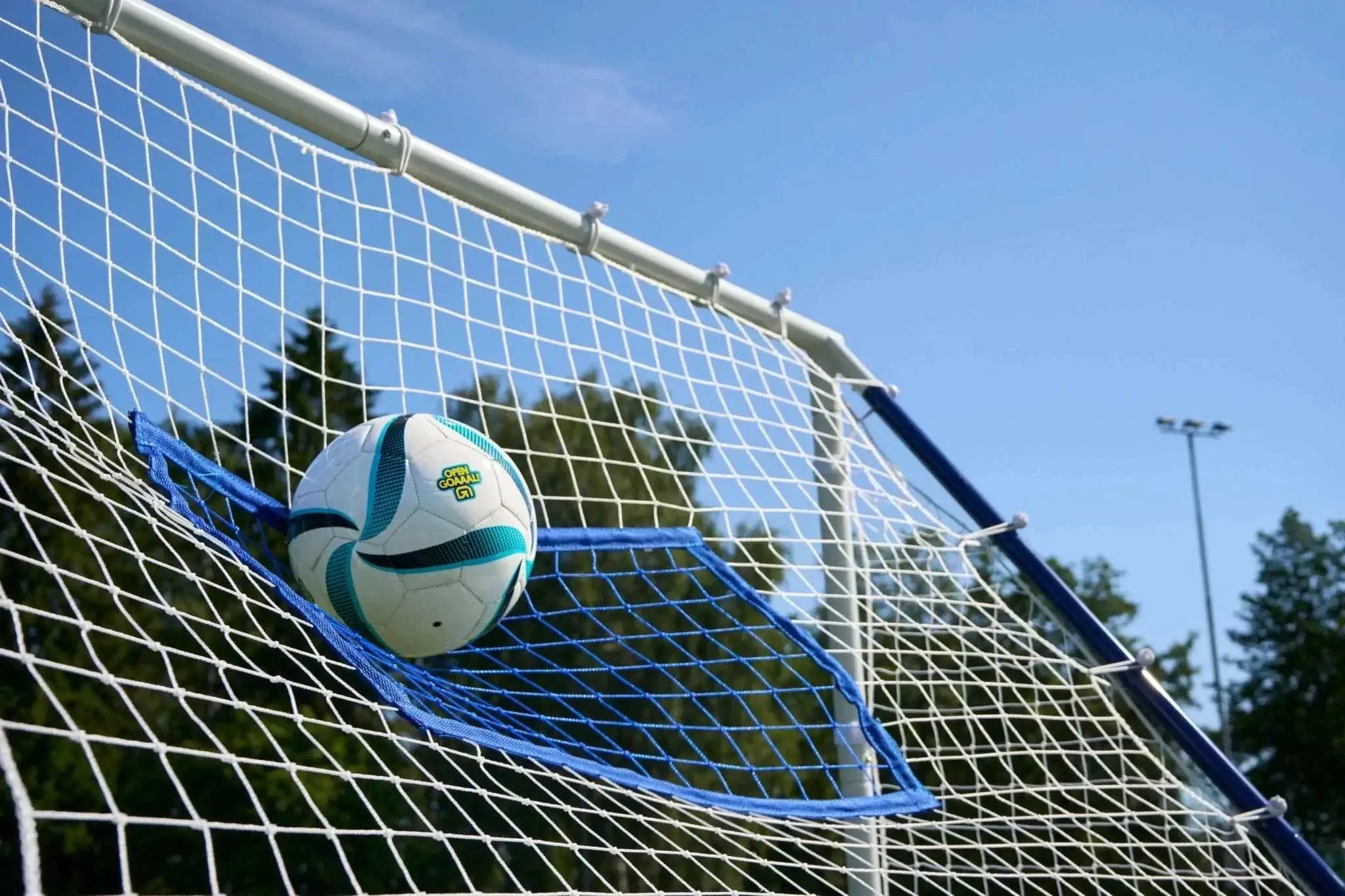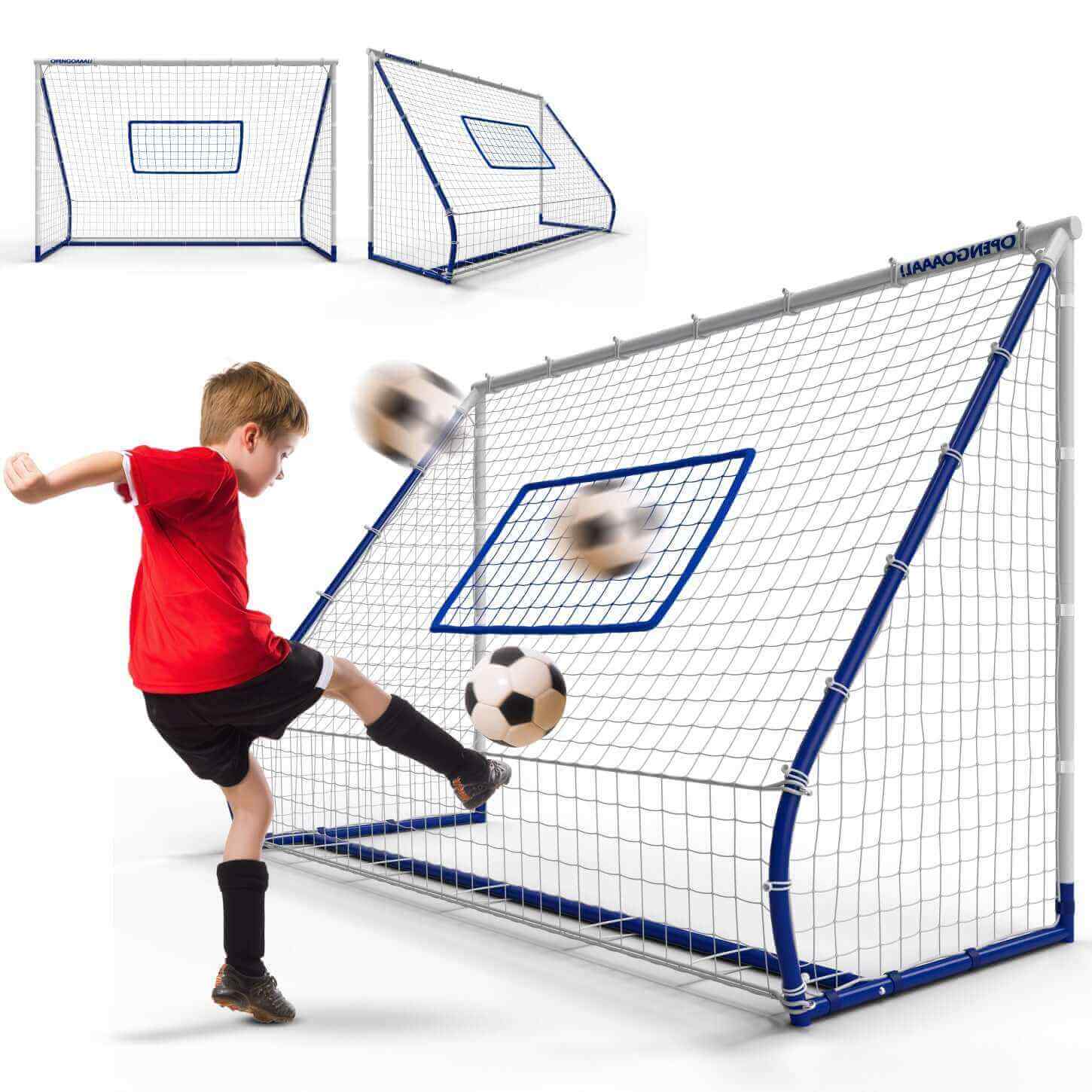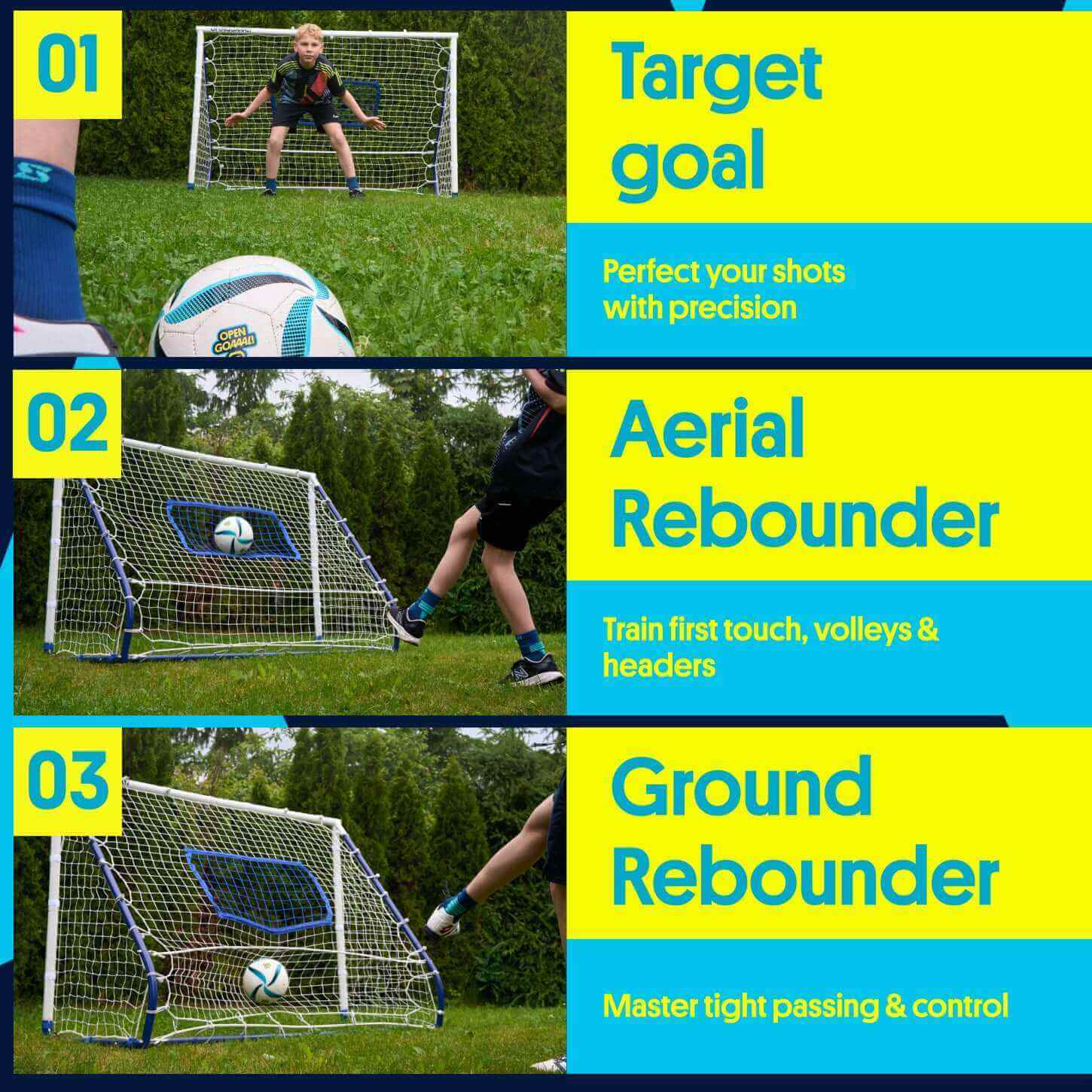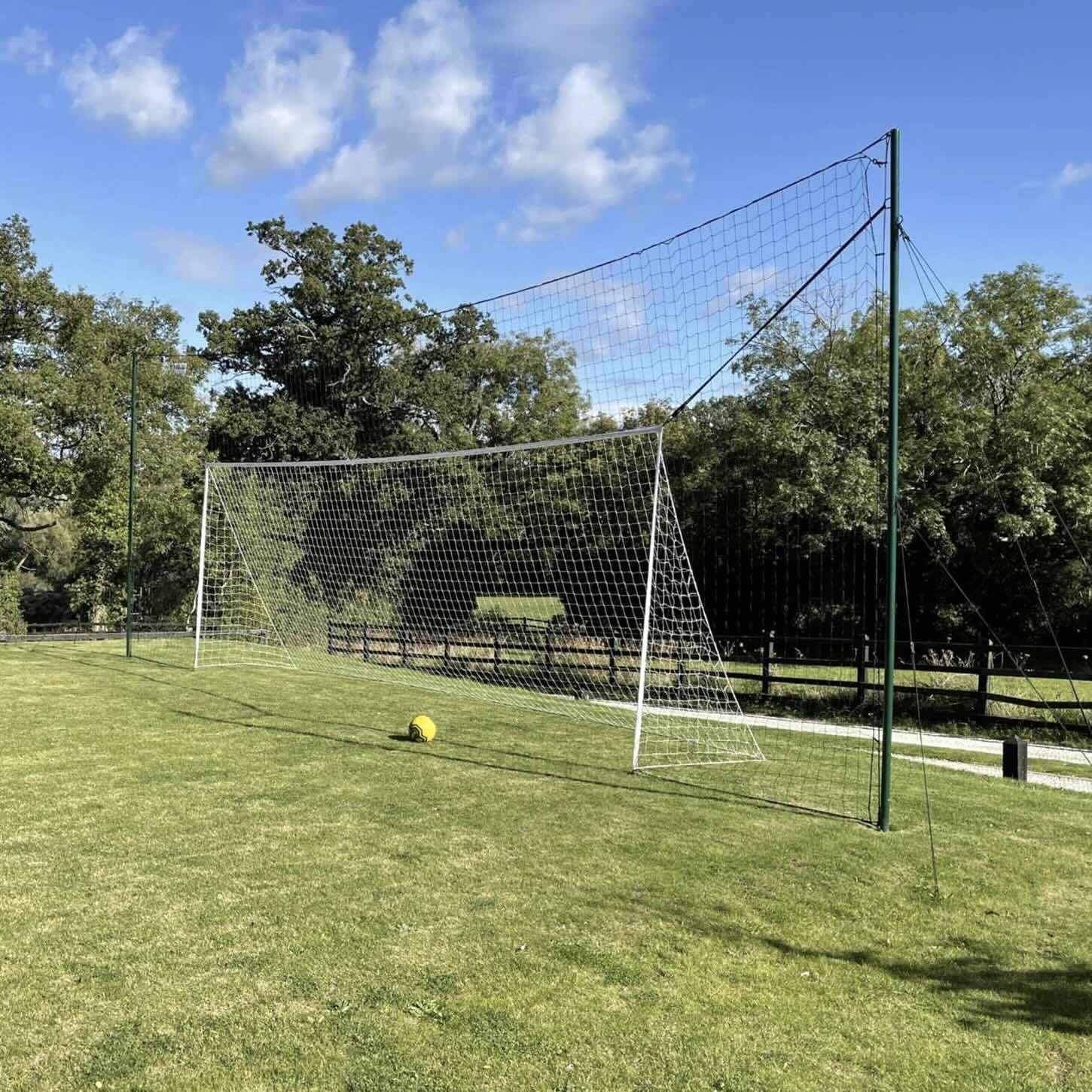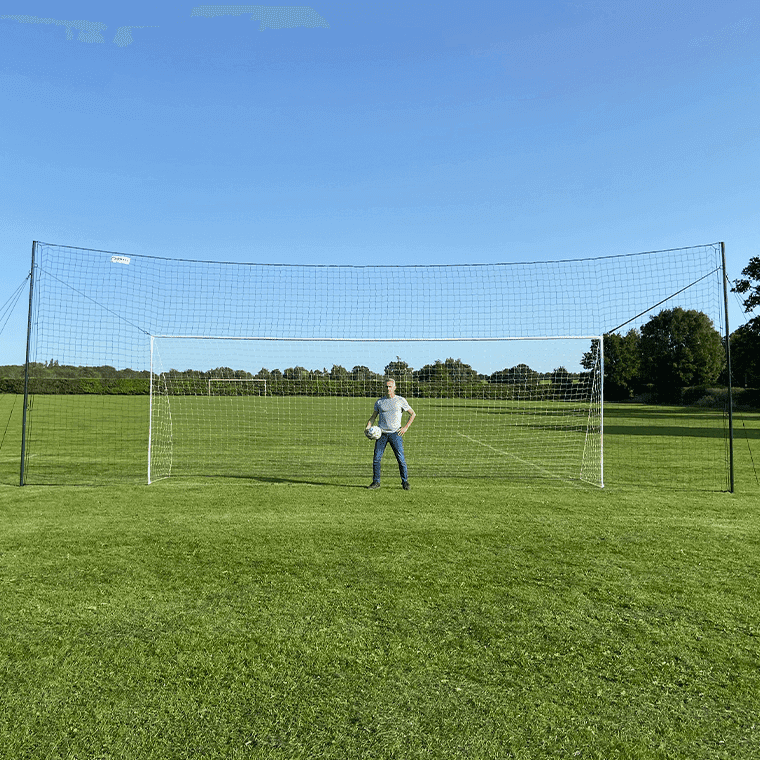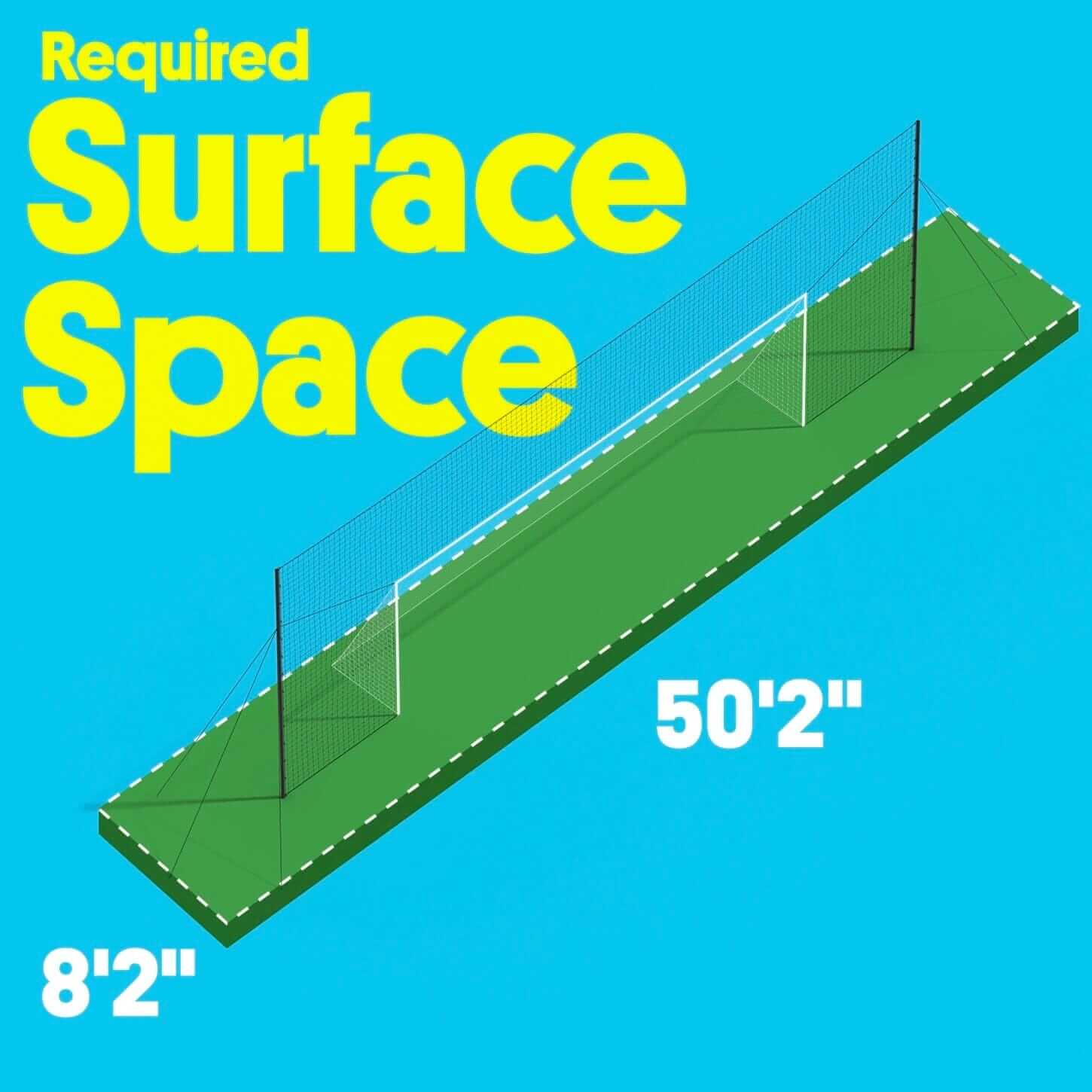Like anything else in life, the more you practice soccer, the better at it you will become. And while it is excellent to have organized coaching sessions with others, there is no need to have a group, or anybody else at all, if you want to develop your skills or improve the fundamentals of your game.
Fortunately, the nature of the game is that there are many soccer skills that somebody can practice in their backyard by themselves. The advantage of this is that you can learn at your own pace, and can choose which skills you want to concentrate upon, rather than be dictated to by the needs of the group.
Practicing by yourself also helps build and instill confidence. If you can master a skill on your own, and make your “mistakes” in private, you will feel more prepared to show them off in front of teammates the next time you play, or in a match situation. When practiced often enough, soccer skills become like second nature and something that comes to you automatically without having to think about it.
Here are some individual training drills that can be carried out in a backyard. They do not need expensive equipment, and, in the majority of cases, can be practiced; however, small the area that you have available.
Juggling
Juggling helps to improve ball control and does not require a lot of space to practice. The ability to juggle will help improve control and the ability to handle the ball more smoothly. Players should set themselves a target time for which they can juggle without losing control of the ball. When they have reached that target, they should set themselves a stricter challenge next time around.
Try also to move the ball in a variety of ways – with side pain, topspin, and backspin. Learning these techniques will give you a much higher range of options when you are playing in a real game.
Trapping
Another critical skill that can be practiced at home is trapping, which is the art of gaining control of a ball by using your feet, thighs, chest, or head.
Players should try and kick a ball as high in the air as possible, and then, as the ball is coming down, use your foot, or another part of your body to bring the ball down to the ground. Make sure that the ball does not bounce away from you, and focus on trying to take the pace off the ball. This will help set you up for your next move on the soccer field, whether it is finding a teammate with a pass, or taking a shot at goal.
Dribbling
Dribbling is a skill that can be practiced in any backyard and needs no other equipment apart from a ball. The art of dribbling is not just about close control of the ball, but also how you use space. It teaches the need to think several moves ahead.
Drills should focus not only on maintaining control of the ball but also on seeing what is around you. Players should learn to dribble with their heads up, rather than looking down at their feet and the ball all the time. Also, place obstacles down in your path, so you are forced to go around them, or practice in a figure-of-eight pattern.
To aid your dribbling, cones or flags can be bought from a sporting goods store. Even if you do not have a lot of space in your backyard, you can set them up and dribble around them.
Passing
The ability to pass the ball is one of the most fundamental of all soccer skills. And it is one that can easily be practiced in a backyard. Take a cone or another soccer ball, place it on the ground ten yards away, and practice passing the ball accurately to the object in question.
Once you can hit the target regularly from this distance, move five yards back and repeat the exercise. Depending on the size of your yard, you should do this until you have run out of the room.
As always, try and work on your weaker foot as well – two-footed players usually have a significant edge over those who use their weaker foot for keeping upright. And practice passing in the air as well, because passes are rarely played just along the ground.
Using a Wall
A wall – perhaps from a garage or shed – is an ideal base to use for soccer training, providing that there are no windows close by (walls of a house itself should be avoided for this reason!).
With a wall, you can practice striking the ball and learning how to pass it accurately. Start by kicking the ball with the instep of the foot from close range against the wall. Once you have mastered control of the ball, take a step back and repeat the same exercise until you are confident you can accurately pass and receive the ball over a variety of disciplines. Then try doing the same with your weaker foot. Try to aim to strike the ball in the middle. Hitting beneath the ball, or kicking it too high will all lead to inaccurate and slow passes.
Now try and kick the ball with your laces, allowing only one bounce before kicking it back against the wall again. This will not only teach you control and improve your passing ability but make it much more likely that you can perform these skills for real in a competitive match situation.
Those who have space or the budget may choose to practice some of these skills with a rebounder instead.
Stair Stepping
Designed to improve stamina and balance, this drill involves placing the ball in front of you, and then jumping on and off it, without allowing it to roll backward. Ensure that you begin with your kicking feet on the ball, and then jump and place the other foot on the ball instead. This exercise helps you work on your control as well as your fitness.




